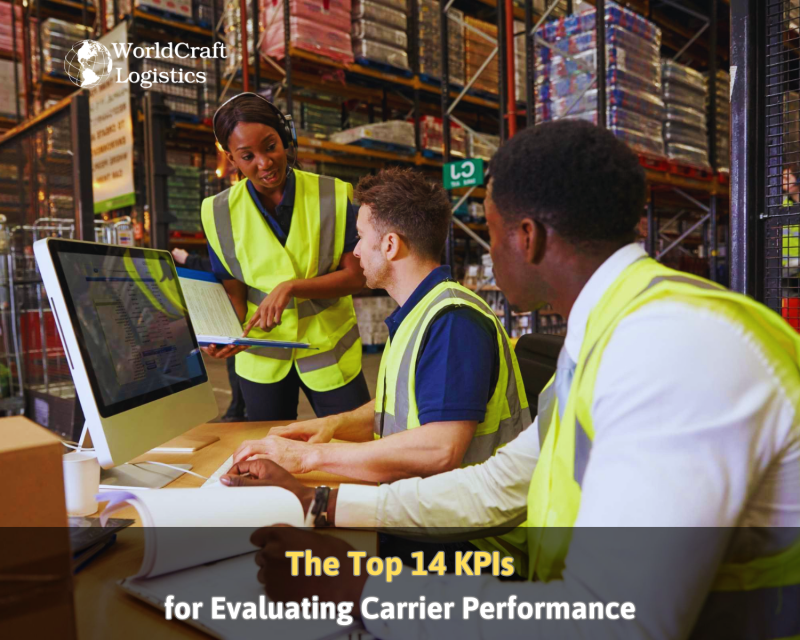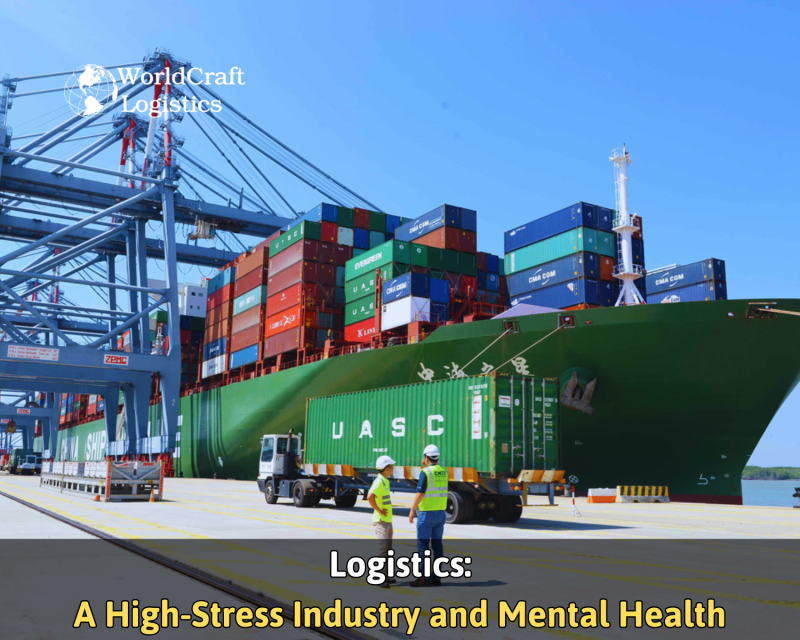
Starting June 1st, 2023 Our warehouse fee will be $0.65/cubic foot per month
In effort to lower the warehouse storage fee during inflation, we have went narrow aisle racking.This construction took us four months but the project is finally completed. With narrow aisle racking, we are able to drop storage by 24%.We as partners will go through this inflation together.
01/22/2024
Measuring and improving carrier performance is essential in the dynamic world of supply chain management and logistics. In order to guarantee efficient transportation of goods, satisfy client demands, and manage expenses, companies need to properly oversee their carriers. In this quest, key performance indicators (KPIs) are essential. We will examine the top 14 KPIs for gauging carrier performance and their effects on supply chain operations in this post.
The foundation of both customer pleasure and operational effectiveness is on-time delivery. The On-Time Delivery Percentage KPI assesses your carriers' consistency in meeting delivery commitments. It is computed by dividing the total number of deliveries made within a given time frame by the number of deliveries that are made on schedule.
In certain situations, meeting a deadline is equally as important as being on time. This KPI gauges the carriers' capacity to adhere to strict delivery deadlines for companies whose operations depend on timely completion. Setting benchmarks and establishing a baseline are essential for each of these KPIs. To determine the best performers and areas in need of improvement, compare the carriers' performance to these benchmarks.
Freight costs have a significant impact on the total cost of logistics. You can assess each carrier's cost-effectiveness by computing the cost per mile. A reduced cost per mile could be a sign of a more effective routing or carrier plan.
One important financial statistic is your overall freight expense. You can control your logistics budget by keeping an eye on it. This KPI takes into account all shipping-related expenses, such as fuel, transportation, and accessory fees.
Financial conflicts and discrepancies may result from inaccurate invoices. Carrier invoice accuracy is a metric for how frequently bills reflect the agreed-upon fees and services. It is a crucial KPI for keeping costs under control.
Meeting transit deadlines is essential for timely delivery. Meeting client expectations depends on carriers adhering closely to their anticipated transit times, which is measured by transit time adherence.
In the modern world, having real-time visibility is essential. The In-Transit Visibility KPI gives you information on how well your carriers can follow you. Carriers with strong tracking systems provide comfort to both you and your clients.
Three essential components of carrier performance are cost control, dependable transit times, and on-time delivery assurance. But the evaluation of carrier performance doesn't end here. Keep an eye out for the next sections, which will cover more essential KPIs that are essential to evaluating and enhancing the performance of your carriers.
High rates of damage and loss can lead to monetary losses as well as disgruntled customers. You may monitor the state of the goods as they are being transported with the use of this KPI.
In what manner and with what speed are problems such as losses or damages resolved? The Claim Resolution Time KPI evaluates the carrier's responsiveness in handling these circumstances.
Capacity optimization is necessary to achieve cost-effectiveness. Capacity utilization tracks how well carriers make use of the space they have available, guaranteeing that your transportation expenses are justified.
The amount of time a carrier needs to accept a shipment once it is tendered is called the carrier lead time. It's essential for efficiently organizing and scheduling shipments.
Monitoring carbon emissions is not only responsible but can also result in cost savings in an era of increased environmental consciousness. Cutting carbon emissions is good for the environment and your financial situation.
Evaluate the dedication of carriers to eco-friendly operations. You can select partners who share your sustainability aims with the aid of this KPI.
In the end, the best measure of carrier performance is customer satisfaction. Survey your customers and get their input to find out how they feel about your carriers.
NPS calculates how likely it is that a consumer will promote your services and how loyal they are. When a carrier's NPS is high, it means that its performance meets or exceeds what customers expect.
In the transportation sector, safety is of utmost importance. The Accident Rate KPI assists you in assessing a carrier's safety record by monitoring the frequency of accidents involving them.
For the sake of your business and reputation, you must make sure that carriers follow safety guidelines and requirements.
Effective data interchange and communication are essential to supply chain management. The degree of carrier integration with your electronic data interchange systems is measured by EDI integration.
Capabilities for real-time tracking and tracing are essential for monitoring shipments. This KPI assesses the level of visibility that carriers offer throughout the transportation process.
It's crucial to reply to questions and concerns right away. Assess the speed at which carriers respond to your complaints.
Communication that works well must be consistent. Assess the frequency with which carriers offer information and updates regarding shipments.
Regulatory compliance guarantees carriers adhere to the law. This KPI evaluates how well they follow laws and rules.
Incomplete or inaccurate documentation may cause problems with compliance and cause delays. This measure assesses how accurate carrier paperwork is.
A vital component of carrier performance is reliability. To gauge their dependability, keep track of the number of deliveries and pickups that are missed.
Calculate a dependability score by taking performance, issues, and historical data into account. You can use this score to determine your carrier partnership decisions.
A useful tool for analyzing and contrasting carrier performance across numerous KPIs is a carrier performance scorecard. Find out how to make one that works for you.
Learn how to improve decision-making, accountability, and transparency by putting a carrier performance scorecard into place.
Evaluate carrier performance data on a regular basis to find areas that need improvement. This could entail resolving problems, streamlining procedures, or looking for new carrier alliances.
Examine tactics for putting KPI insights into practice to improve carrier performance and overall supply chain efficiency.
Key performance indicators, or KPIs for short, are measurements that are used to assess how well various facets of freight shipping are performing. You may gain insights into the efficacy, efficiency, and shipping quality processes by using these data.
Key Performance Indicators (KPIs) are a great tool for firms to monitor their performance and make operational improvements. These indicators offer data-driven perspectives for pinpointing areas that might be optimized. This enables improved decision-making to raise client satisfaction and lower related expenses.
Accurately track shipping expenses and compare them to carrier bills to ensure the KPIs are accurate. To prevent billing problems, make sure that any inconsistencies are resolved with the carriers.
Determine the best routes, efficient scheduling, carrier selection, and customer and carrier communication in collaboration with your 3PL. It's also critical to acknowledge potential disruptions caused by elements like traffic and weather.
This determines the typical shipping cost for one item of your merchandise. This promotes cost containment and transportation efficiency. Pricing and budgetary decisions are aided by the increased cost control and shipping efficiency that results from this.
To sum up, evaluating carrier performance using these 14 KPIs is essential to having a successful supply chain. You can make data-driven decisions that result in improved carrier partnerships and a more seamless supply chain operation by concentrating on on-time delivery, cost control, transit times, shipment quality, carrier capacity, sustainability, customer satisfaction, safety, technology integration, communication, compliance, reliability, and continuous improvement. You may gain a competitive edge and give your clients great service by routinely checking these KPIs and actively looking for methods to enhance carrier performance.
It takes work to assess carrier performance efficiently, but the effort pays off. It enables you to maximize expenses, guarantee on-time delivery, improve client satisfaction, and advance sustainability. This article's top 14 KPIs offer a thorough framework for assessing and enhancing carrier performance in your supply chain. Start with these KPIs, adjust them to meet your unique requirements, and observe how your supply chain operations improve.
Recall that the world of logistics and supply chains is constantly changing. Update and modify your KPIs frequently to keep up with new developments in the market and industry best practices. This will help to keep your supply chain efficient and competitive. You may raise the bar for supply chain operations success by implementing these KPIs into your carrier management plan. Start tracking, evaluating, and enhancing your carrier performance now to ensure a better and more productive tomorrow.
SEO
Digital Marketing/SEO Specialist
Simon Mang is an SEO and Digital Marketing expert at Wordcraft Logistics. With many years of experience in the field of digital marketing, he has shaped and built strategies to effectively promote Wordcraft Logistics' online presence. With a deep understanding of the logistics industry, I have shared more than 500 specialized articles on many different topics.

Labor sources and jobs
01/22/2024

Labor sources and jobs
12/28/2023

Labor sources and jobs
04/21/2024

Labor sources and jobs
10/19/2023

Labor sources and jobs
02/07/2023